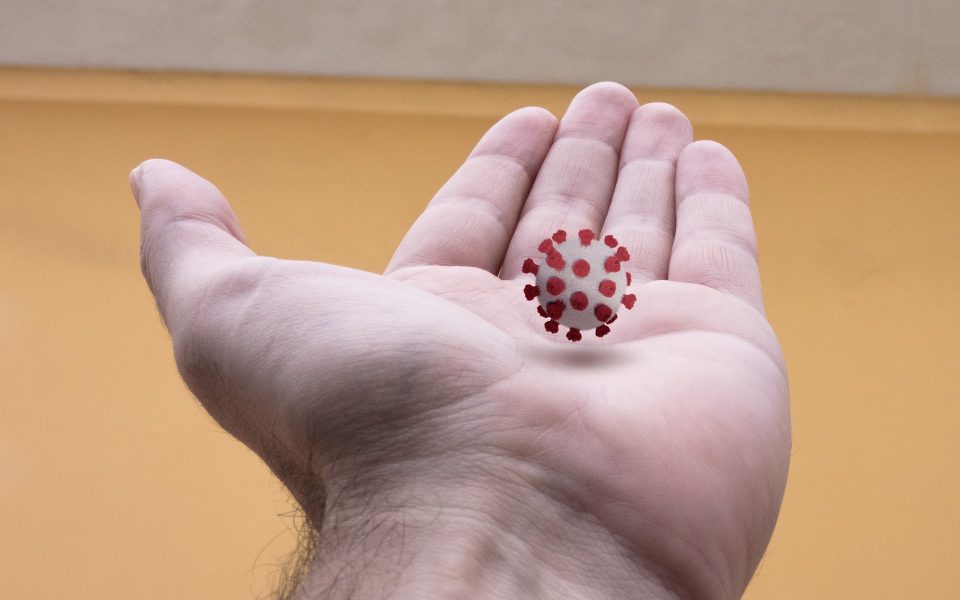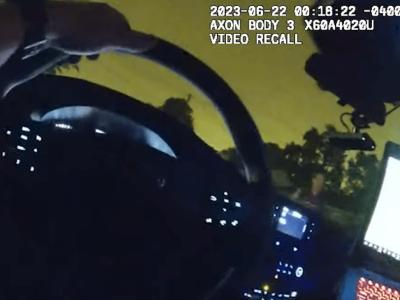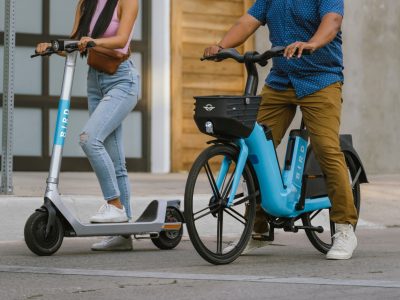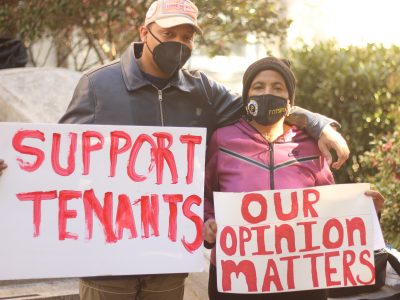This article first appeared on North Carolina Health News and is republished here under a Creative Commons license.
by Rose Hoban
Lisa Gralinski is a virologist who studies human coronaviruses. She’s an assistant professor in the Department of Epidemiology at the Gillings School of Global Public Health at the University of North Carolina at Chapel Hill. She’s been studying human coronaviruses for close to 13 years and has published dozens of papers, including 29 papers in the past two years.
Gralinski was willing to take a few minutes as she prepared for the holidays to talk to NC Health News about what’s happening with Delta, what we can expect in coming weeks and to explain how Omicron has spread so quickly. (This conversation has been edited for length and clarity).

NC Health News: Lisa Gralinski, thanks for talking to us on short notice during a holiday week.
So, let’s do a little bit of basic review: Can you give us a really basic primer on the immune system? What are antibodies? What are B cells? What are T cells?
Lisa Gralinski: Oh, wow, we are going to reveal how poorly I paid attention to my basic immunology classes in college!
So, to start, your B cells and your T cells are the two main components that we think of in the immune response. They’re definitely not the only thing. There are dendritic cells, there are macrophages, there are NK cells. We’re going to ignore them for the purpose of simplicity.
Your B cells recognize antigens, they recognize invading pathogens, like SARS CoV2. And in response, they can make these wonderful things that we all are really relying on these days, antibodies. B cells will make less refined antibodies, initially. Then when they get more education, say a second or third dose of a vaccine, they improve the diversity of their response, the quality of the response and make better antibodies. That’s why most of the vaccines that you get as a kid, you get multiple rounds of them.
It’s very “not unprecedented” for us to be thinking about two, three doses for what ends up being the final COVID vaccine.
NCHN: Got it.
Gralinski: Now, T cells work in concert with your B cells. And they also have really great functions on their own. We have multiple types of T cells. We have memory T cells and we have memory B cells that are all really important. And T cells are also great for recognizing cells that are showing the body that they have a foreign substance in them. They will present a little piece of antigen on their surface. And that’s like a red flag saying “Hey, come attack me, come kill the cell because there’s something wrong going on here. I’ve been invaded.”
This type of response seems to be really well-conserved with the vaccines. Even when we’re talking about people who’ve been infected with the Omicron variant, if they’ve been vaccinated before, the T cell response is really well-conserved. The neutralizing antibody response is not as well conserved for people who’ve only had two doses of vaccine, it looks pretty good for people who have been boosted. But if you only have two doses of your mRNA vaccine, then regardless of how recently they were, it looks like your antibodies aren’t specialized enough to do a great job of recognizing the Omicron variant and neutralizing that virus, as studied in tissue culture in laboratories, obviously.
NCHN: We only have lab data because Omicron is so new, and it’s spreading so fast.
Gralinski: Oh my gosh, so fast.
NCHN: It’s really freaking fast!
Gralinski: It’s really fast!
We have been caught pretty flat-footed in our response in the U.S. where we’ve been watching what was happening and saying, like “Okay, we’re gonna have to get ready because it will start being here.”
And then yesterday, the CDC said that probably 70 percent of the cases in the U.S. are actually Omicron because of the delay that we have in going from a swab that’s a positive to being sequenced and getting that data reported. It definitely caught me really off guard.

On Monday, Durham County announced that there had been six Omicron cases identified. And to go from that, to hearing that in the South, we’re 95 percent Omicron, well, those don’t jive to me. I don’t know what day those six patients presented themselves in Durham to get tested. We only got the sequence data announced yesterday, but when they actually got tested was probably quite a bit earlier.
NCHN: I don’t know if you saw my tweet yesterday. I tweeted that “week ending Dec 4, #OmicronVarient (sic) was 0.4% of cases in the US. For the week ending Dec 11, it was 12.9%. As of Saturday, Dec. 18 it was 73% of cases. In the Southeast, it was 95.2% of sequenced #COVID19 tests.” I really refrained myself from tweeting, “holy shit” after that.

Gralinski: But it would be appropriate. It’s what we’re all thinking.
It’s very difficult to draw the line between keeping up to date with current information and doom scrolling right now, because they’re kind of the same thing.
NCHN: To go back to, you know, dosing. It seems like getting a third dose as a booster or getting that additional dose if you were infected, or if you have the J&J vaccine, it increases your antibodies. What is that going to do for you if you’re exposed to Omicron? I’m not going to ask you, “is that going to protect you from infection?” I’m going to ask you, “what does that mean when you are exposed?”
Gralinski: It means you have a better chance of fighting off that initial exposure.
Unfortunately, I think at this point, we need to acknowledge that there’s a really good chance that all of us are going to be exposed to Omicron. The question is whether or not that results in you getting COVID-19 the disease. And that’s where having your three doses, having high circulating neutralizing antibodies are going to combine and be really important for you hopefully, not getting an active infection at all. But if you do, having it be a mild and not just the technically “mild,” you-didn’t-end-up-in-the-hospital version of mild,, but a relatively minor, transient, upper respiratory infection, that is more of a nuisance than a long-term health concern.
But we just don’t have enough data about people who’ve been infected in various categories, you know, young, middle aged, old, different vaccine status, different comorbidities that people might have. Are they overweight? Do they have type 2 diabetes? Do they have underlying heart disease issues? Do they have hypertension? All of these things that you may or may not know about the people you’re surrounding yourself with, and you may not want to disclose about your own health status, they can have a big effect on the outcome of infection. And Omicron is infecting people really, really rapidly. And it takes weeks and months for enough data to come in and be analyzed properly, not rushing to a snap assumption that, “Hey, it looks like not too many people here ended up in the hospital, it’s okay, Omicron’s mild, guys, we don’t have to worry.”
It hasn’t been long enough.
If we’re judging based solely on South Africa, we need to acknowledge that that’s a much younger population than exists in Western Europe. In the U.S., where we’re now trying to make these comparisons with many more senior citizens in the U.S. than they do in South Africa, and then previous exposure history. We need to know, were people vaccinated? Had they had a previous case of COVID? All of these things need to be combined to do the type of rigorous analysis that we just don’t have enough data for yet.
Unfortunately, we’re probably going to see these analyses not really able to be done until the wave has really made its way through us already. That’s what happened with Delta.
NCHN: The early data seem to indicate that Omicron manages to evade some of the antibodies that people have, correct?
Gralinski: Yes, Omicron, with all of its spike mutations, is the first variant where we’ve really had to worry about immune evasion.
It also means that some of the monoclonal antibodies that we had been relying on to help treat people who are in those really high-risk categories, or maybe weren’t able to get vaccinated, but were exposed, they’re not going to work anymore. Those tools that we were thinking of, “Even if I get it, I’ll be fine,” because those are not going to work with this variant. I think there’s maybe one of the companies’ antibodies that still looks decent.
The antiviral medications that are starting to come out, those will still work but we don’t have many doses available, it takes time to ramp these things up.
Really avoiding getting sick is the better option here. Let’s not wait to get sick and then hope that treatments are available.
NCHN: The proteins on the spike that lock into the receptor sites, the ACE 2 receptor site in human cells, some of the changes, I understand, make it a better fit. Can you explain a little bit of that?
Gralinski: Because of years of work that had been done previously with related coronaviruses, and how they replicate and bind to the ACE 2 receptor protein, we already knew the structure of the spike protein and we knew which amino acids in that protein are the important residues for the receptor-binding domain and which ones actually make contact with the ACE 2 receptor.
In those models, when you change it from the original, the Wuhan sequence, or the Delta sequence, to the sequence for the Omicron variant, we can see how a lot of those key contact residues have actually changed.
NCHN: Gulp!
Gralinski: Yeah, and because those are the contact residues that allow the virus to bind, and then, in turn, infect cells, those are the ones that our naturally produced antibodies that develop after you’ve been vaccinated, tend to target because those are going to neutralize the virus when your antibodies bind there, and also what the monoclonal antibodies that were developed tend to go after.
Luckily, a lot of labs are working on more universal type approaches that would be hopefully variant resistant, or if, God forbid, you know, if there is a COVID-27 lurking out there in another six years or something, like I hope not! But to have something like that available that we would predict is broadly recognizing enough to be able to protect against whatever is lurking out there in the future.
So instead of just targeting the top of that spike protein, that’s making contact with ACE 2 kind of going in more to the side, the stalk, the stem structure, which is more conserved and doesn’t have as much immune pressure.
NCHN: That’s really interesting. One of the other things that’s in the literature is that this infection manifests a lot faster. It appears the latency period, the time between exposure and you starting to get symptoms with Wuhan and Delta was five, seven days. You weren’t necessarily contagious until day three, four, or five, maybe. Now it’s sounding like people are manifesting symptoms within, I don’t know, three days, four days.
Gralinski: That really seems like what we’re seeing from the epi data. Eurosurveillance just published a report on that Norwegian holiday party. And that was pretty clear, with the timing being incredibly rapid. This really worries me, because we don’t have time for people to recognize what’s happening to get tested, to get confirmed, to notify their contacts and try and stop transmission chains. If everything’s happening so rapidly, and especially at a time of year when people have more contacts than usual, it’s not a good situation for Omicron continuing to spread even more rapidly.
NCHN: If we’re doing a really, really “fast” job with turning around PCR testing. And we’re able to get it around in 24, 36 hours, which is what they mentioned at the gubernatorial press conference on Monday. But if from exposure to transmissibility, when I get exposed to it to the point where I can start transmitting, it is only, say, 72 hours. It doesn’t give me a big window of time, to call everybody and go, “OMG, I’ve got Omicron! Don’t go to the next party!”
Gralinski: Exactly. That’s part of where people are really thinking about what their priorities are this holiday season and maybe working backwards from there about how to manage their risk.
If you’re really set on having Christmas dinner with grandma or some other higher risk family member on Saturday, minimizing your contacts during this week leading up to that is really important.
NCHN: Last year, it was like you minimize your contacts for 10 days. Now, it’s kind of like you minimize your contacts for six days, and you’re probably within five days, and you’re probably good. Is that correct?
Gralinski: I think that is the most critical time period for sure. If you can do longer, do longer. If you can get your hands on a rapid test, and luckily, I have some in my pantry that are waiting for our Christmas travel. That’s great.
But they’re difficult to find. Obviously, not everyone can afford them, especially with extra holiday bills coming in. So it’s great to hear that the administration is going to send out half a billion free tests to the states and everything, but honestly, we needed them a few days ago. That will help in a few weeks or whenever they actually get delivered and get to people. But that doesn’t solve our very immediate problem of Omicron tearing through our communities and people having had the thought in their heads for the past year that in 2021, Christmas would be different, that they would be able to see their families. They did the right thing. They got vaccinated. They made plans and now life has been upturned again.
NCHN: One other thing in the literature was a group out of Hong Kong, looking at the replication of Omicron in the nasopharynx. Like it’s stunningly more replicated?
Gralinski: Yeah, the replication was so much higher in those bronchus cells that they tested compared to lung cells.
I really want to see more data and the full methodology on all of this. They’re a very experienced research group, they’re trusted and known names in the coronavirus field attached to that press release. If that bears out it would very well match up with the rapid transmission and the pretty exponential growth we’re seeing for Omicron compared to other variants. It makes a lot of sense.
NCHN: They’re talking about something like, 70 times the amount of virus compared to Delta in those cell cultures.
Gralinski: Yeah. The 48 hour sample looked more similar, but at 24 hours, there was a really huge difference. And that goes along with rapid transmissibility, the really exponential growth in cases.
NCHN: And it was upper respiratory. So that’s a-choo, cough, cough.
Gralinski: Yeah, that’s when you’re thinking, you’re just a little irritated, maybe your throat got dry or “Oh, the air just got really dry.” Your sinuses are irritated. “I’m definitely not sick, because it’d be inconvenient to be sick.” pause
People need to think, “Maybe, I am sick.” Get tested, if possible. Please, please, please be wearing a mask while you’re out in public, indoors. That’s one of the easiest things we can do that doesn’t interfere with your plans.
And we had been using KN94s mostly in my house, because personally, I think they’re very comfortable. And they’re a good fitting medical grade mask, but not as uncomfortable as an actual N95. But for this trip, we’ll be driving to New England. I went ahead and got actual N95s.
I’ve been fit tested, my husband hasn’t been formally fit tested. But when we need to, say, go into that rest area in New Jersey to pick up some food to keep going on our drive, I will have an actual N95 on my face. I’m not interested in taking any chances in large indoor areas with lots of people who I don’t know, and I don’t know what their exposure history has been. I assume a solid percentage of them won’t be wearing masks. So I’m just going to be taking every step that I can to keep myself and my family members safe because some of the people that I plan on seeing are very vulnerable.
NCHN: As an epidemiologist what would you like to see President Biden say today?
Gralinski: I don’t even know at this point, the whole situation is so frustrating. Mostly, I wish that he had talked to us last week. Pause. It’s so, it’s too late, it’s really maddening. I would like him to encourage people to really minimize their contacts. We need mask mandates, in my opinion. And we need people to be wearing good masks. And that means helping provide them for people. A homemade cloth mask is not going to cut it at this point.
NCHN: Is that because Omicron is replicating so much, a homemade cloth mask is gonna let some stuff go by? Since there’s so much more replication of Omicron, that there’s that much more getting by?
Gralinski: Right. And it seems like if you have even a mild exposure to Omicron, so many people are getting infected, and that there is a good chance that you won’t develop severe disease. But that doesn’t mean you won’t pass it on to someone else who does develop severe disease.
That’s where thinking beyond our own individual risk is really, really important.
Also, just the burden that we’re placing on our health infrastructure in particular. Those people who are really struggling and suffering right now. We also need to realize that even if you manage your risk reasonably well, or even if you have only a transient infection, it’s holiday travel, it’s winter. And if you have an accident or something else goes wrong, and even if you don’t have COVID, and you end up needing to go to the hospital, for some reason right now, the hospitals are very full, your doctors are overworked, you’re not going to get care that’s at the same quality that you would have been able to receive two years ago, even though our medical providers are working so, so hard and doing as much as they physically and mentally can.
But when the system is stretched to its breaking point, it’s not possible to provide optimal care.
NCHN: Are we all going to be exposed to and maybe catch this thing?
Gralinski: I’ve had a lot of text messages in the past 48 hours saying that.
Yeah, I think we will all be exposed to Omicron. I feel very comfortable saying that. So, we will all be exposed to SARS CoV2 whether or not you get COVID-19 disease depends on a lot of factors, definitely including your own vaccination status, and your public contacts and your mask wearing and these are actions that you can take.
NCHN: In other words, how sick you get will depend on all that. It could be anything from like sniffles to, or maybe losing your sense of smell for a week or two, to ending up on a ventilator or dying. It all depends on your layers of protection and risk.
Gralinski: Yeah. And we need to take as much action as we can for ourselves personally there but also recognize that we have contact with a lot of people, and what people consider to be an acceptable personal risk, they’re also imposing on all the people that they have contact with if they’re not masking and acting as carefully as possible. And so, yes, you do need to go to the grocery store, but how can you help the people around you there be safe and especially the people who are essential workers and working there.
You know, I do think there are things that we can still do safely. Is there a chance that I’ve changed my mind by Thursday night and we scrap the whole thing? That chance is not zero.
NCHN: Wow, okay. You know we are supposed to have dinner with friends tomorrow night. And I’m going to be saying to them, “Alright, who have you seen this past week? Where have you been?” One of them is working from home, the other has been traveling. We’ll likely ask, “Are we gonna do this get-together tomorrow night?”
Gralinski: And that’s exactly the type of conversation I want to really encourage people to be having. Be clear about where you’ve been and who you’ve seen. And have you really been wearing that mask?
Also think about who you’re seeing and where you’re going to be. If our Christmas plan was to get together with a couple of friends here in North Carolina, who we know and trust, I would probably not be questioning it. It’s because our Christmas plan involves driving to a major virus hotspot of the country right now. That is why I’m so willing to keep things under consideration.
Everyone’s individual circumstances are going to vary, but take a really good, long, hard look at what your risk is the risk of who you’re going to see and prioritize those gatherings or actions that are the most important to you, and step back from there and take the actions that are necessary this week leading up to it to be as safe as possible.
Most of my Twitter timeline is news and fellow scientists right now with a little bit of UNC basketball because I love college basketball, and I love UNC basketball. But there was a tweet about the game tonight and free tickets for whoever promises to go and be loudest. And I was, like, “This is the worst idea ever.”
If you want to safely get together with people, going to an indoor stadium full of screaming people, even if they’re all supposed to be wearing masks isn’t the action to be taking on Tuesday night before Christmas.
So sorry, UNC, but that’s my firm opinion!
North Carolina Health News is an independent, non-partisan, not-for-profit, statewide news organization dedicated to covering all things health care in North Carolina. Visit NCHN at northcarolinahealthnews.org.
Join the First Amendment Society, a membership that goes directly to funding TCB‘s newsroom.
We believe that reporting can save the world.
The TCB First Amendment Society recognizes the vital role of a free, unfettered press with a bundling of local experiences designed to build community, and unique engagements with our newsroom that will help you understand, and shape, local journalism’s critical role in uplifting the people in our cities.
All revenue goes directly into the newsroom as reporters’ salaries and freelance commissions.





Leave a Reply